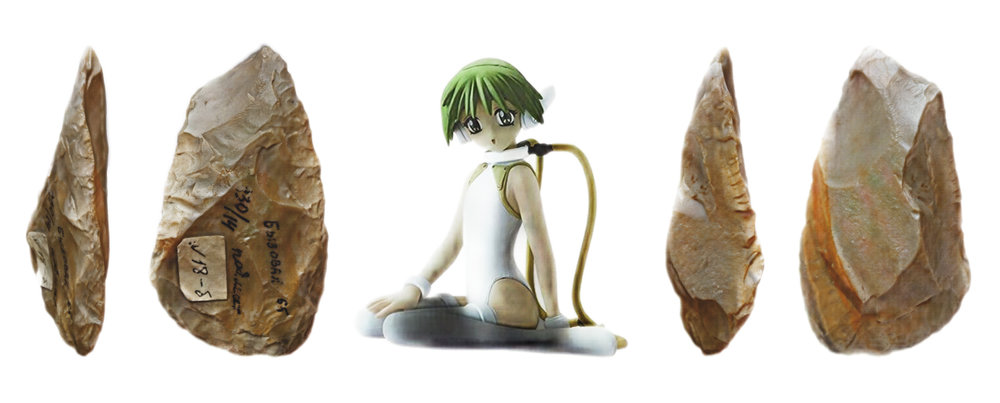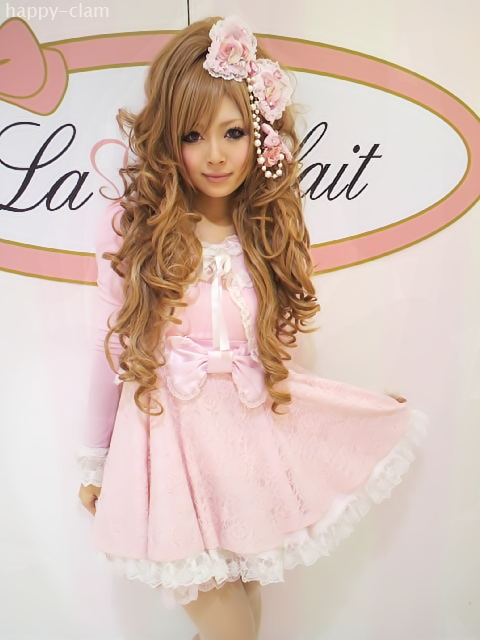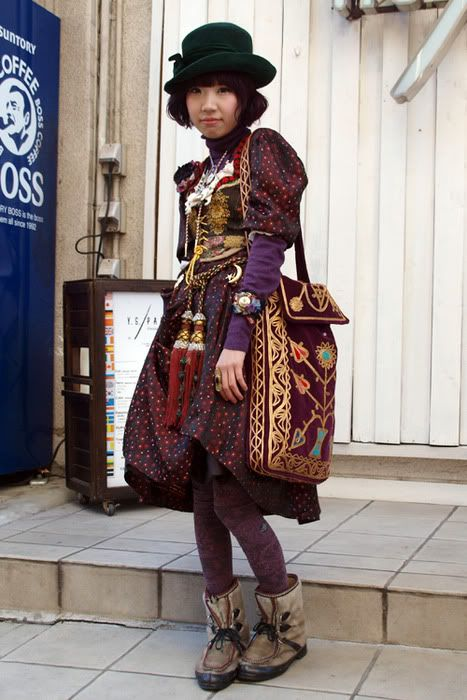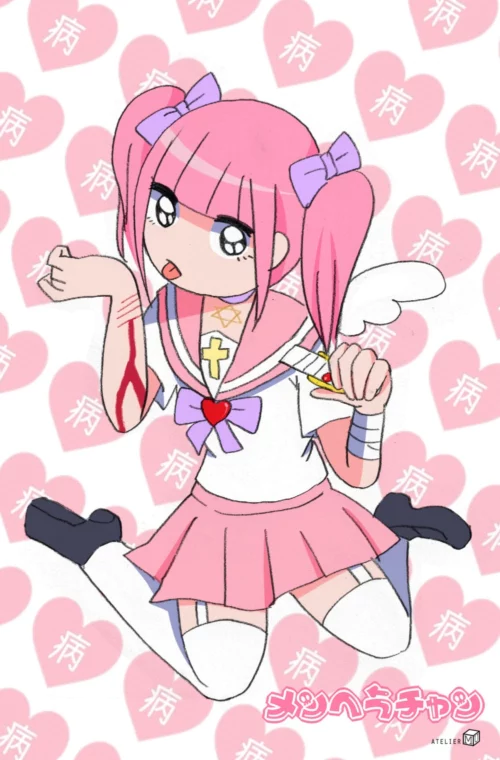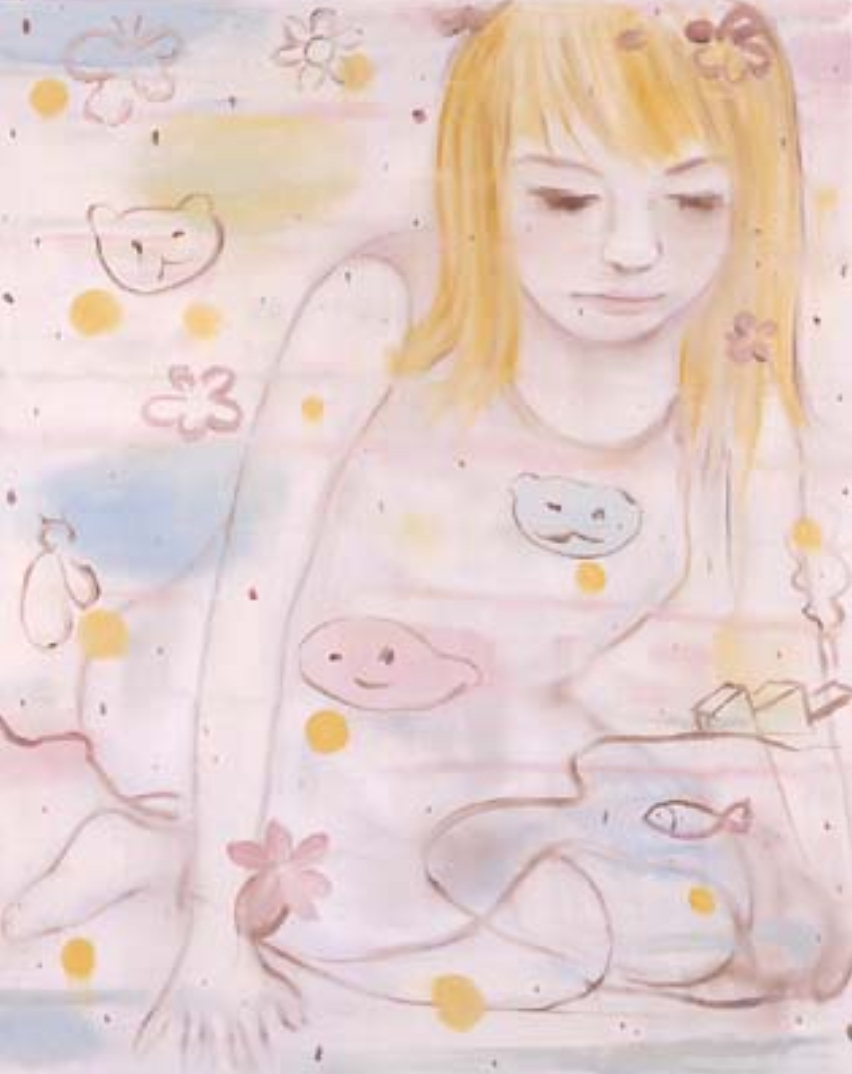P
pastel turn
[1] “‘Millennial Pink’ Is the Colour of Now – but What Exactly Is It?,” The Guardian, March 22, 2017, sec. Art and design, para. 3.
[2] Véronique Hyland, “Is There Some Reason Millennial Women Love This Color?,” The Cut, August 2, 2016, para. 3.
[3] “‘Millennial Pink’ Is the Colour of Now – but What Exactly Is It?,” para. 2.
[4] William Shakespeare, Hamlet, Prince of Denmark, ed. Philip Edwards, The New Cambridge Shakespeare (Cambridge, UK: Cambridge University Press, 2003).
[5] Sianne Ngai, Ugly Feelings (Harvard University Press, 2007), 1.
[6] Michael Dimock, “Where Millennials End and Generation Z Begins,” Pew Research Center, January 17, 2019, para. 5.
[7] Marykate Jasper, “Millennials Are America’s Queerest, Least Binary Generation Yet,” The Mary Sue (blog), April 1, 2017.
[8] “The History of the Transgender Flag,” Point 5cc (blog), April 23, 2015.
[9] Guy Standing, The Precariat: The New Dangerous Class (London, UK ; New York, NY: Bloomsbury Academic, 2014).
[10] Sarah Marsh, “The Boomerang Generation – and the Childhood Bedrooms They Still Inhabit,” The Guardian, March 14, 2016.
[11] Mark Fisher, “What Is Hauntology?,” Film Quarterly 66, no. 1 (2012): 16.
[12] Simon Reynolds, Retromania: Pop Culture’s Addiction to Its Own Past (London: Faber & Faber, 2012).
[13] Reynolds, x.
[14] Christine R. Yano, “Flipping Kitty: Transnational Transgressions of Japanese Cute,” in Medi@sia: Global Media/Tion in and Out of Context, ed. T. J. M. Holden and Timothy J. Scrase (London u.a.: Routledge, 2006).
[15] Reynolds, Retromania, 122.
[16] Grafton Tanner, Babbling Corpse: Vaporwave And The Commodification Of Ghosts (Winchester, UK ; Washington, USA: Zero Books, 2016), 55.
[17] “Soft Grunge,” Online dictionary, Urban Dictionary, October 10, 2012.
[18] Pernille Kok-Jensen and Els Dragt, Always Be Yourself. Unless You Can Be a Unicorn, Then Always Be a Unicorn: A Snapshot of the Weird and Wonderful World of the Tumblr Generation (Amsterdam: Bis Publishers, 2014), 51.
[19] “Soft Grunge.”
[20] Elle Hunt, “Global Slime Craze Sparks Safety Warnings after Borax Blamed for Burns,” The Guardian, January 5, 2017.
[21] Cara Rose DeFabio, “Why Teens around the World Are Freaking out about Thai Slime,” Splinter, para. 3, accessed June 15, 2019.
[22] Staff in Life, “Why Is the Internet Obsessing over Slime?,” Highsnobiety, June 15, 2017, “Slimey Money” para. 1.
[23] Bruno Latour, We Have Never Been Modern, trans. Catherine Porter (Cambridge, Mass: Harvard University Press, 1993).
[24] Brian Ashcraft, “Japan’s Next Big Trend Could Be ‘Neo Gals,’” Kotaku, May 6, 2014, para. 1.
[25] Ashley Clarke, “Genderless Kei: Harajuku’s Online Fashion Revival,” i-D, February 23, 2016; i-D, I-D Meets: Tokyo’s Genderless Youth, 2017.
[26] Clarke, “Genderless Kei,” para. 2.
[27] Clarke, para. 1.
[28] Preston Phro, “Where Have All the ‘gyaru’ Gone?,” Japan Today, April 2, 2015.
[29] Marc Bain, “Japan’s Wild, Creative Harajuku Street Style Is Dead. Long Live Uniqlo,” Quartz (blog), February 22, 2017.
[30] Ashley Clarke, “What the Closure of Fruits Magazine Means for Japanese Street Style,” I-D (blog), February 6, 2017, para. 1.
[31] Tokyo Fashion, “Panic on The Streets: No, The End of FRUiTS Magazine Is Not The End of Harajuku Fashion,” Medium (blog), March 2, 2017, paras. 14-18.
[32] Agejou is gyaru sub-style which emphasizes glamour, femininity, and sex appeal, often incorporating lingerie elements such as fancy bras, garter stockings, and corset lacing. The style was popularized by the magazine AGEHA, which promotes sexy-cute fashion aimed at young women and the hostess industry “Agejo,” in Gyaru Wiki, para. 1, accessed March 19, 2019.
[33] Himegyaru (“princess gal”) is gyaru sub-style. According to the Gyaru Wiki, “A lot of himegal have that puffy beehive-style hair, but it's not a requirement, any girly style is fine as long as it looks very fancy. Clothes include long, cocktail dresses or short dresses in mainly red, white, pink, blue and black, as well as leopard and floral print. Empire line tops and dresses are very popular and so are denim jackets, in summer” “Himegyaru,” in Gyaru Wiki, para. 1, accessed March 19, 2019.
[34] W. David Marx, “Japanese Women | From Luxury to Yuru-Nachu,” The Business of Fashion, July 29, 2008, para. 9.
[35] Joshua Paul Dale et al., eds., The Aesthetics and Affects of Cuteness (New York: Routledge, 2016), 6.
[36] “Yuru-Nachu,” MEKAS, July 23, 2008.
[37] Yutaka, “Fairy Kei – The Pastel Princesses Of Japan,” WA (blog), October 13, 2016.
[38] Miss Kellie, “Guide to Mori Kei {Forest Girl Style},” Dear Miss Kellie, (blog), November 22, 2013, para. 6.
[39] Kirsten, “What Is Dolly Kei?,” Strange Girl (blog), December 14, 2010, para. 1.
[40] Ashley Clarke, “The Tokyo Shop Workers Shaping the Future of Japanese Fashion,” I-D (blog), August 30, 2016, para. 1.
[41] Jiji Ningyomocha, “~ Cult Party Kei ~,” POPkakumei☆ (blog), February 3, 2013, para. 6.
[42] Ningyomocha, paras. 7–12.
[43] Ningyomocha, para. 4.
[44] Ningyomocha, paras. 16–17.
[45] Ningyomocha, para. 9.
[46] Marilyn Ivy, Discourses of the Vanishing: Modernity, Phantasm, Japan, 1 edition (Chicago: University Of Chicago Press, 1995), 10.
[47] Refinery29, The Dark Side Of Harajuku Style You Haven’t Seen Yet, Refinery29, accessed March 18, 2019.
[48] Mai Nguyen, “When Dark and Cute Meet: Yami Kawaii with Bisuko Ezaki,” Asia Pacific Arts (blog), July 13, 2018; Amy, “The Yamikawaii World Of Ezaki Bisuko ♡ Menhera-chan,” Lafary (blog), December 4, 2018.
[49] “Masahiko Kuwahara,” 19-09-2013, Artsy, para. 1, accessed May 8, 2017.
[50] “Masahiko Kuwahara,” para. 1.
[51] Ngai, Ugly Feelings, 278.
[52] Ivy, Discourses of the Vanishing, 10.
[53] David Ehrlich, “From Kewpies to Minions: A Brief History of Pop Culture Cuteness,” Rolling Stone, July 21, 2015, para. 2.
[54] Ivy, Discourses of the Vanishing, 121.Millennial pink, also called Tumblr pink, is an indefinable “grapefruit shade of apricotty salmon”[1] hailed by several reports from the fashion and design world as the color of the 2010s. [Figure 1] An article in The Guardian, titled “‘Millennial pink’ is the color of now – but what exactly is it?” asserts that despite being so en vogue, “no one can agree on the actual color. Or the name...” According to the fashion blog The Cut, millennial pink is an “ironic pink, pink without the sugary prettiness. It’s a non-color that doesn’t commit, whose semi-ugliness is proof of its sophistication”[2] It is also said to be “timeless, yet very now.”[3] As such, millennial pink embodies a fundamental off-ness, the uncanny sense of time “out of joint”[4] that haunts the commodity nostalgia of Internet microgenres embedded in ironic meme cyberculture, like vaporwave, in which millennial pink features prominently. Like every pink color, millennial pink relates to cuteness and femininity, but unlike other shades, it evokes the affective and “political equivocality”[5] of the lacking and the fading, or the otherwise not-quite-there. Millennial pink is a narrow shade of pink, existing on a threshold of illegibility and doubt. Therefore, it is a suitable ambassador for the pastel turn, i.e., the gravitation of pop-cultural aesthetics in the 2010s towards the light, desaturated “baby” colors with a soft, milky or washed out feel.
The millennials, a generation of people born in the 1980s and 1990s, who came of age in the 2000s,[6] are known for their categorical dissolutions. A dissolution or changeability of genders: a cursory Google search returns dozens of articles characterizing millennials as the “Queerest, Least Binary Generation Yet”[7] (significantly, the transgender pride flag is composed of baby blue, baby pink, and white stripes, while the genderqueer flag features a lavender stripe to represent androgyny; both reinforce the association of pastelness and nonbinarism[8]). But also, the dissolution of traditional social classes in the form of an emerging “precariat”[9] and a “boomerang generation”[10] (i.e., impoverished “middle-class” adults who are forced to return to their parent's houses in their 20s or 30s, after having lived independently) marked by economic instability well into adulthood. And, more broadly, a dissolution of “all the lost futures that the twentieth century taught us to anticipate”[11] and of the “human” itself, amid the radical critiques of nature, technology, and anthropocentrism in the face of looming social-environmental catastrophes.
The pastel turn also connects to the affective and political properties of cuteness, nostalgia, and ambiguity, which are a crucial component in contemporary mediatic milieus marked by “retromania.”[12] Particularly, Internet-bred microgenres like vaporwave, seapunk, slimepunk, icepunk, soft grunge, and pastel goth share a fetishist nostalgia for 1980s and 1990s technology and pop culture, as well as a preference for “desaturated” motion and tempos: loopy, slow, suspended. As music critic Simon Reynolds puts it, “time itself seemed to become sluggish, like a river that starts to meander and form oxbow lakes.”[13] American live-action series like Miami Vice, cartoons like Care Bears, My Little Pony, and Jem, or anime like Sailor Moon, have contributed to the “pastelization” of the music, fashion, and visuals filed collectively under the umbrella term “A E S T H E T I C.” Pioneered by vaporwave album covers like Macintosh Plus’s 2011 Floral Shoppe, featuring a millennial pink background and title in katakana, [Figure 2] the term “A E S T H E T I C” originated from Savvy J’s YouTube video ♋ AESTHETIC ♋, uploaded in November 2013. [Video 1] The video (now gone due to Savvy J’s account having been terminated) was a montage of excerpts from Disney’s Japanese crossover videogame series Kingdom Hearts, overlaid with GeoCities GIFs and the classic Windows 95 logo screen saver. Throughout the video, Sora, the protagonist of Kingdom Hearts, sinks in slow motion into the ocean or looks longingly at the sky, accompanied by a nostalgic piano melody and slow beats. Sora himself is an embodied “transnational transgression,”[14] being a 3D anime character based on Mickey Mouse, with his white gloves, red shorts, and giant yellow shoes, reflecting the “liquidization”[15]—or even, the “vaporization”[16]—of cultural commodities in the Internet era.
The diminutiveness of A E S T H E T I C microgenres has led to much online debate regarding their legitimacy; often, they are dismissed as jokes or trolling by opportunistic Internet users capitalizing on meme appeal. An example of this perplexity-inducing quality of A E S T H E T I C is the Internet meme “I still don’t know what soft grunge means.” [Figure 3] The phrase, written in 3D computer fonts and pastel gradients, highlights the contradictory meanings of “soft” and “grunge”—the abrasive, angst-filled music style of bands like Nirvana, Soundgarden, Alice In Chains or Pearl Jam. The look originated on Tumblr microblogs circa 2010,[17] with photographs of “heroin chic” models accompanied by depressive soundbites like “☹ sad teens with happy faces 😊” or “I believe in hate at first sight.” The typical soft grunge dress code includes dip-dyed hair in pastel colors like turquoise, ash violet or baby pink, colored lips, cute glittering textures, cat-themed accessories, and flower crowns,[18] used in tandem with thrift store clothing. [Figure 4] According to the Urban Dictionary’s top definition, soft grunge is,
“A term generally used to describe modern-day teenagers, typically girls between the ages of 14-18, who like create a “hardcore” persona on Tumblr by reblogging pictures of inverted crosses, dip-dyed hair, ying-yang symbols and toilets. They like to pretend that they listen to grunge music by wearing stylish Nirvana tees that match their $200 pair of Doc Martens. If you were to ask them who the Misfits were, they’d probably say anyone who isn’t sporting spikes this season.”
This description shows that unlike the authentic messy-girly look of kinderwhore icons like Courtney Love or Kat Bjelland, [Figure 5] soft grunge is perceived to be a bowdlerization of 1990s grunge, mollified through commodity nostalgia for the consumption of teenyboppers. The instability and flexibility of contents, identities, and styles often associated with a softening of their critical edge through nostalgic use is consistent with the substances that classify other A E S T H E T I C microgenres, like “vapor,” “sea,” “slime,” or “ice.”
One can recognize the contemporary obsession with the liminal and the amorphous in seemingly unrelated phenomena, like the “global slime craze”[20] that spread through social media in 2017 in the form of do-it-yourself slime tutorials and stimming/sensory ASMR blogs and videos. Initiated by a group of Thai teenagers in 2016[21] and popularized by Instagram and YouTube celebrities like Talisa Tossell, Wengie, Gillian Bower, Nim C, Karina Garcia, and others, the slime trend (much like soft grunge’s relation to “real” grunge) is not about Matthew Barney-esque mucus or disgusting Alien secretions. Instead, Intenet slime’s bubble-gummy, fluffy, rainbowny, unicorny, glittery, holographic, buttery, and cotton candy textures appeal to viewers for their cuteness, prettiness, and playability. [Figure 6] And, like soft grunge, slime is a girl-dominate turf: “Teenage girls, who serve both as the trendsetters and the businesswomen slinging their top goo mixtures for roughly $7-10 per tub, almost exclusively run the slime market.”[22] However mercantilized, the slime craze, in its glamorizing primordial soupness and drive towards the haptic appeal of things against mechanized mass production, echoes Bruno Latour’s claim that “we have never been modern.”[23]
In Japan, the pastel turn has been visible in the mid-2010s with the rise of styles like neo gyaru (“neo gal”) and genderless kei through Twitter, Instagram, and Tumblr. Fashion designer, model, and DJ Alisa Ueno popularized the neo gyaru trend influenced by soft grunge, seapunk, and vaporwave, to create a style described as “part Americana, part Tokyo, and lots and lots of bleach,”[24] in which neon pastels feature prominently. [Figure 7] In turn, Genderless Kei is characterized less by a specific fashion style than by genderfluidity. In the case of male practitioners, this translates into a cutification of masculinity through clothes, hair, makeup, and traditionally female-oriented Instagram or Snapchat filters.[25] [Figure 8] Although neo gyaru and genderless kei have been hailed as the next big thing in Japanese street fashion, according to writer Ashley Clarke these trends are Instagram-centered, appearing primarily on social media platforms rather than on the streets.[26] In the real-life district of Harajuku, Tokyo’s world-famous street fashion hub, Clark states that apart from lolita fashion practitioners, “Normcore has replaced that stereotypical aesthetic wildness as the dominant trend on Japanese streets.”[27] Online, some commentators question “Where have all the “gyaru” gone?”[28] while others ironize that “Japan’s wild, creative Harajuku street style is dead. Long live Uniqlo,”[29] mourning the loss of lounder, eccentric styles like ganguro, yamanba or decora in favor of mass-market fashion. The impression that Harajuku style is dead was reinforced in 2017 when, after 20 years of fieldwork, the iconic street fashion FRUiTS Magazine printed its final issue, stating that “there are no more cool kids left to photograph.”[30] although some suggest that a multitude of factors is behind the end of FRUiTS, unrelated to a shortage of models.[31]
The perceived decline of Harajuku may also be related to the “pastelization” of Japanese street fashion in the late 2000s, resulting from trends like fairy kei, mori kei, dolly kei, and Cult Party kei. This “pastelization” is physical, relating to an increase of people dressed in desaturated shades, and metaphorical, signaling the toning down of Harajuku’s extremeness. In Shibuya, the Tokyo neighborhood with department stores like 109, known for being the hub of the gyaru subculture, the gyaru style has suffered a similar process of “pastelization.” With the emergence of agejou[32] and himegyaru,[33] gyaru ditched the deep tans of ganguro for lightly tanned or fair skins that conform to traditional Japanese beauty standards, and generally wear lighter, fancier, and sexier clothes in white, beige, and baby pink. [Figure 9] The late 2000s also saw the mainstream rise of yuru-nachu (“relaxed natural”) in Japan. Shifting away from gyaru-style bodycon clothing and plastic-fantastic street styles like decora, yuru-nachu’s “relaxed silhouettes, muted colors, and layering organic textiles”[34] emphasize environmental responsibility and loose, laid-back everydayness. [Figure 10] According to some commentators, yuru-nachu reacts against what “Benjamin Noys calls the ‘malign velocities’ of contemporary capitalism,”[35] by drawing from the anti-capitalist fashion trends of bohemian and hippie movements: “There are many theories that sluggish economies coincide with lower hemlines, and certainly, yuru-nachu has come into the market at a time of deep economic insecurity, especially amongst young people… The laid-back, ‘soft’ style fits perfectly with the general post-materialist tone of Generation Y in Japan: ‘relaxed’ and ‘safe’ trump ‘edgy’ and ‘risky.’”[36]
Yuru-nachu was a mainstream trend, but the “relaxed natural” zeitgeist reached to Harajuku. In the 2010s, new styles like pop kei, fairy kei, mori kei, dolly kei, and Cult Party kei emerged that adopted kawaii aesthetics in a more subdued way, neither garish like ganguro or decora nor rococo like lolita fashion. These discrete trends share an overall preference for the soft, dreamlike cuteness of gelato and earthy tones, coupled with layered A-line silhouettes. The practitioners of pop kei (also called Spank!) and fairy kei have been called “the pastel princesses of Japan,”[37] and the trend is often associated with the broader aesthetic of yume kawaii (“dream cute”). While the typical Pop kei practitioner strives to look like a 1980s pop sweetheart, [Figure 11] and fairy kei is more about the slumber party look, [Figure 12] both fashions embrace frilly, glittery, and fluffy textures, magical girl accessories, childlike patterns of unicorns, rainbows, and kittens, and prints of cartoon characters like Care Bears, My Little Pony or Jen. In turn, mori kei (mori meaning “forest” in Japanese) and dolly kei aim for a different type of nostalgia: not so much for childhood as for a more primitive state of human society, i.e., the rural life, preindustrial life, speckled with the fairytale-ish atmosphere of Scandinavian cottages and European countryside girls. Mori kei practitioners should have an air of pure childlikeness about them,[38] evoking the Danish and Norwegian hygge mood of “coziness” and “comfortable” with shawls, long skirts, fabric layers, fur, and embroideries in “natural” colors. [Figure 13] Dolly kei is more inspired by vintage dolls, favoring the ethnic flavor of Middle Ages and Eastern Europe folk costumes, Grimm's tales, and a bohemian style.[39] [Figure 14]
Cult Party kei is at the intersection of these “pastelization” trends, combining the antique look of mori and dolly kei with the pop vibes of yume kawaii. It is not uncommon in Japanese street fashion that shops singlehandedly initiate entire subcultures, using their staff as influencers who form "a unique community of employees hired to be brand ambassadors, models, and de facto ‘faces’ of the brands they work for.”[40] Indeed, Cult Party is the name of a resale boutique in Harajuku—previously known as Religion Party, now renamed Virgin Mary—with a “shabby chic” concept, from which the style first stemmed. Cult Party kei aims for a dreamy-creamy look in off-white, cream, and beige tones (although gothic variations exist in which black is the primary color), mixing vintage clothes with ballerina wear and sleepwear: “babydolls, bloomers, lacy lingerie, and garters, but also cute pajama pants and large pajama-shirts.”[41] Cute stuffed toys, magical girl merchandise from series like Sailor Moon and Pretty Cure, Christian crosses and Marian iconography, along with hand-sewn tote bags decorated with lace and yarn, seashells, dried or fake flowers, doll parts, and paint, complete the look.[42] Red crosses, in particular, became the trademark motif of Cult Party kei, with entire outfits coordinated around the aesthetics of nurse uniforms. The overall impression is one of whiteness with red, purple, and dark pink accents,[43] distinct from other pastel aesthetics like fairy kei and dolly kei, that dabble in a broader range of neon and earthy pastel hues. [Figure 15]
Cult Party kei hair abides by the same chromatic rationale, dyed grey, ash blonde and brown, black or cherry red; and makeup-wise, pink blush is worn high on the cheekbones and under the eyelids, making the practitioners look like tired, sad dolls (sometimes amplified by wearing circle contact lenses to make the eyes appear more prominent).[44] [Figure 16] As blogger Jiji Ningyomocha suggests, “a slightly ‘off’ look fits well with the style”[45] of Cult Party kei, therefore the allure of “flawed” handmade and customized items. In this sense, Cult Party kei reflects on a bodily precarity, on uncertainty and tiredness, blurring the states of consciousness between being awake or asleep, alive or non-living. Other 2010s street fashion trends, like health goth (a mixture of goth and sportswear), also incorporate medical imaginaries, but whereas health goth tends towards a transhumanist aesthetics of fitness and urban combat, [Figure 17] Cult Party kei is contrary to such bodily and mental athleticism. Instead, it promotes the weakness and inactivity of sleep and sickness, on both physical and emotional levels. Its biopolitics is also weirder and more ambiguous than the retro or antique inclinations of fairy, mori, and dolly kei, presenting a unique blend of kawaii fashion tropes, such as doll faces and frilly clothes, with red and Christian crosses, which are icons of humanitarian relief and faith healing.
The trend of yami-kawaii, or “sick-cute,” serves as a broader backdrop for Cult Party kei’s adherence to the “consuming and consumable pleasures”[46] of cuteness and nostalgia. In 2018, a specific trend of yami-kawaii, known as menhera kei (“mental illness style”), captured the attention of Western media for its growing popularity in Harajuku. As a street fashion, yami-kawaii mixes dream pop elements from pop and fairy kei with medical, grotesque or antisocial motifs, including syringes, hangman’s nooses, wrists bandages, band-aids, blood splatters, homicidal or suicidal slogans, and swearwords.[47] [Figure 18a, b] The style is associated with Ezaki Bisuko, an illustrator from Pixiv who created the character and manga Menhera-chan in 2014, a girl who transforms into a magical heroine by cutting her wrists.[48] [Figure 19]
However, the yami-kawaii combination of cuteness and sickness has long roots in Japan. One could trace it back to postwar manga, but closer antecedents can be found in the 1990s, for instance, in the work of Japanese artists like Neo Pop painter Nara Yoshitomo and Mizuno Junko, author of the manga Pure Trance (1996–98), both of whom mix adorable, round characters with disturbing mental themes and gore in their works. [Figures 20 & 21] Kuwahara Masahiko (b. 1959) is another established Japanese artist whose paintings align closely with the pastel aesthetics of Cult Party kei. According to Kuwahara’s biography available at Tomio Koyama Gallery’s website, he “leads a secluded life and does not own a computer or television, but receives his news from the world via newspapers and fliers.”[49] In the 1990s, Kuwahara became known for his cute although eerie paintings, where characters “appear variously despondent, deformed, and isolated, referencing themes of estrangement in contemporary life.”[50] For instance, in The Exchange (1998), there is a barely formed hybrid pig-bird holding a dripping tomato, its mouth and wing stained with red liquid, making it is unclear whether it is vegetable juice or blood. [Figure 22] In Clean Meat (1996), Kuwahara paints two cylindrical lengths in which one sports the face of a pig, while the other has had its face neatly sliced off and is now showing its ham-like interior. [Figure 23] Cornea (artificial world) (1996) consists of two half-rabbits joined at the stomach. [Figure 24] These works exemplify the “cute aggression” in Kuwahara’s paintings, where smiling animals are submitted to bodily injuries, reflecting the unseen violence behind the glossy images of advertisement and science (e.g., intensive animal farming, animal testing, etc.).
In retrospect, Kuwahara’s early paintings fit perfectly into the aesthetics of yami-kawaii, which, as mentioned above, was being practiced in the mid-1990s by various Japanese artists. More recently, however, Kuwahara’s show Fantasy Land (2017) at Tomio Koyama displays a full incursion into the lighter end of the pastel spectrum. The paintings in Fantasy Land, mostly acrylics on canvas of small or medium dimension, resemble white nowhere lands inhabited by doodle-like creatures, nondescript objects, and buildings reduced to bear architectonic structures. Like the painting themselves against the whiteness of the gallery’s walls—so white that, at first glance, it would appear that the room is empty—these elements seem about to dissolve and fade into the backdrops, unable to muster the physical or mental strength to maintain their formal integrity. [Figure 25a, b] In smaller paintings of animals it is unclear if they are living or merely stuffed toys, creating an uncanny impression accentuated by Kuwahara’s use of scale (is that a girl on a stage, or a porcelain figure on a tabletop? Are those objects on a window display, or miniatures in a candy box? A real animal, or a teddy bear on a shelve?). [Figure 26] While the paint is evenly distributed, Kuwahara’s rough brush strokes leave subtle thinner areas and cloggy impastos that, along with his misshapen figures, give the paintings a deliberately amateurish look, akin to Cult Party kei’s fascinations with DIY imperfection. [Figure 27]
In Kuwahara’s paintings from the mid-2000s, there are young women with pale skin and light hair, resembling characters from a fairy tale, often in their underwear, nightgowns or ballerina leotards. [Figure 28] In the 1990s, his figures’ contours also tended to be more precise. Kuwahara’s progression from the clearer outlines of earlier works to childish scribblings in later paintings is less about the modernist admiration for children’s freedom or outsider art, than what appears to be a dumbing down or numbing of the artist’s own motor faculties. The “anti-auric, anti-cynical tedium”[51] that these paintings exude is neither hypnotic, nor transcendent, nor ironic. Kuwahara’s lack of chromatic content seems to enforce a lack of time and space, like a faraway memory of a pre-industrial world or a pre-adult life—an empty, ever silent fantasy land that, as Marilyn Ivy puts it, is “shot through with not only the impossibility but also the ultimate unwillingness to reinstate what was lost.”[52] This “unwillingness” to reinstate the past despite one’s adoration for it is a characteristic identifiable in nostalgic expressions more broadly, with which the pastel turn often aligns, but there is a more profound tension at work in Kuwahara’s paintings.
His characters and landscapes radiate a genuinely benign feeling: they are cute and pretty, comfortable and safe—even effortless, or yurui. In many ways, they can be thought of as visions of a classless world, reenacting a Rousseaunian “state of nature,” i.e., the mythical existence of humans, animals, and things before social hierarchies came into existence. At the same time, Kuwahara seems to self-consciously reinsert this Arcadia of looseness and relaxation into the processing machine of a “cuteness-industrial complex,”[53] the same that mass produces Hello Kitty-like dolls, stationery, and other fancy goods. There is a “soft” violence that thoroughly underlines the commodification of bodies in Kuwahara’s world, which is why the inhabitants of his paintings are ambiguous icons of in-betweenness, making it impossible to tell whether they are living subjects or inanimate objects, dead or alive. In short, Kuwahara’s “utopia… is nowhere, literally,”[54] as placeless, nostalgic visions of unspoiled idyll always are.
See in CUTENCYCLOPEDIA –Dark Web Bake Sale, Hamster & Poppy.
See in PORTFOLIO – Mori.
REFERENCES in Pastel Turn.
CONTENT NOTICE
This entry is potentially disturbing or unsuited for some readers.Mentions or depictions of mental illness and self-harm.Figure 1 Millennial pink. Source.
Figure 2 Album cover of Floral Shoppe by Macintosh Plus (a.k.a. Vectroid), 2011. Source.
Video 1 A compilation of vaporwave songs with A E S T H E T I C S visuals. Source.
Figure 3 Example of GIF with the phrase “I STILL DON’T KNOW WHAT SOFT GRUNGE MEANS.” Source.
Figure 4 Example of soft grunge hair dyed in grayish-blue. Source.
Figure 5 American singer and songwriter Courtney Love in kinderwhore fashion. Source.
Figure 6 Example of Internet slime. Source.
Figure 7 Examples of neo gyaru fashion. Source.
Figure 8 Example of genderless kei by Japanese tarento and male model Pee. Source.
Figure 9 Example of himegyaru (“princess gal”) fashion. Source.
Figure 10 Example of yuru-nachu fashion. Source.
Figure 11 Example of pop kei. Source.
Figure 12 Examples of fairy kei. Source.
Figure 13 Example of mori kei. Source.
Figure 14 Exmaple of dolly kei. Source.
Figure 15 Example of Cult Party kei. Source.
Figure 16a Example of Cult Party kei makeup with cherry-colored hair, pink blush high on the face, and contact lenses. Source.
Figure 17 Example of health goth fashion. Source.
Figure 18a Examples of yami-kawaii or menhera kei, incorporating self-harm and medical-themed accessories (bone-decorated robe, sleep mask, spiked choker, syringe necklace, zombie thigh-highs with red crosses and band-aid motifs) into their fashion style. Source.
Figure 18b Detail of zombie thigh-highs. Source.
Figure 19 Ezaki Bisuko’s popular yami-kawaii character, Menhera-chan. Source.
Figure 20 Nara Yoshitomo, The Girl with the Knife in Her Hand, 1991. Acrylic on canvas, 150.5 cm x 140.02 cm. Source.
Figure 21 A page from Mizuno Junko’s Pure Trance’s original released as a CD booklet by Avex Trax, from 1996 to 1998. The page displays Mizuno’s sick-cute and erotic-cute imaginaries, with medical themes (nurses, syringes, drugs, etc.) merging with her highly stylized cute caricatures. Source.
Figure 22 Kuwahara Masahiko, The Exchange, 1998. Oil on canvas, 65.2 x 53 cm. Source.
Figure 23 Kuwahara Masahiko, Clean Meat, 1996. Oil on canvas, 130 x 162 cm. Source.
Figure 24 Kuwahara Masahiko, Cornea (artificial world), 1996. Oil on paper, 60,7 x 72,8 cm. Source.
Figure 25a View of Kuwahara Masahiko’s solo show Fantasy Land at Tomio Koyama, in Tokyo. Source.
Figure 25b View of Kuwahara Masahiko’s Fantasy Land. Source.
Figure 26 Example of ambiguous scales in a painting by Kuwahara Masahiko. Source.
Figure 27 Close-up of paintings in Kuwahara Masahiko’s Fantasy Land, with rough brush strokes and impasto. Source.
Figure 28 Kuwahara Masahiko, Acrylamide, 2002. Oil on paper, 100 x 80,3 cm. Source.
ABSOLUTE BOYFRIEND ; (BETAMALE) ; BLINGEE ; CGDCT ; CREEPYPASTA ; DARK WEB BAKE SALE ; END, THE ; FAIRIES ; FLOATING DAKIMAKURA ; GAIJIN MANGAKA ; GAKKOGURASHI ; GESAMPTCUTEWERK; GRIMES, NOKIA, YOLANDI ; HAMSTER ; HIRO UNIVERSE ; IKA-TAKO VIRUS ; IT GIRL ; METAMORPHOSIS ; NOTHING THAT’S REALLY THERE; PARADOG ; PASTEL TURN ; POISON GIRLS ; POPPY ; RED TOAD TUMBLR POST ; SHE’S NOT YOUR WAIFU, SHE’S AN ELDRITCH ABOMINATION ; ZOMBIEFLAT